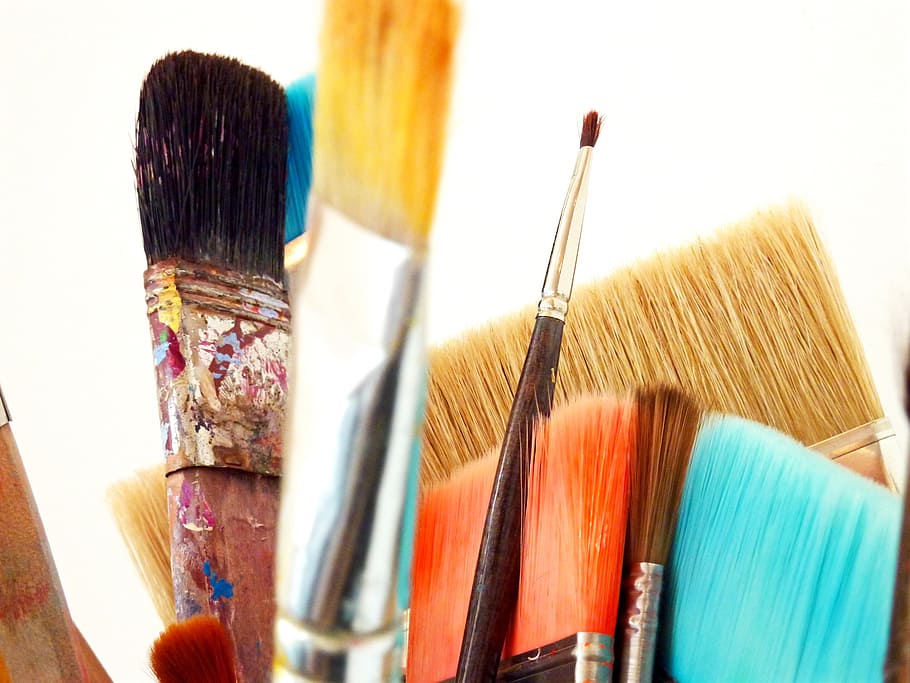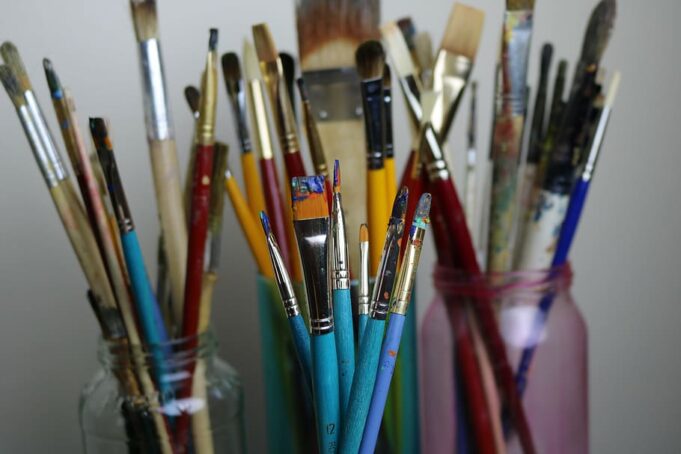Last Updated on December 11, 2022 by
Cleaning of Paint Brushes

Cleaning your paint brushes is essential because it will ensure they’ll last longer. Even if you’re oil painting, you’re still likely to use the same brush for years on end. Cleaning after each use is unnecessary, but cleaning them at least every few weeks is very beneficial. If you don’t clean your paintbrushes properly, they can get dry rot, making them fall apart in small pieces when applied with pressure. This will cause the bristles to go in different directions and won’t be suitable for smooth strokes when painting with your brushes again.
Top 12 Methods about How to Clean Acrylic paint brushes
When it comes to acrylic paint, the most important thing is using it in different ways for different art projects. When using acrylic paint, the last thing you want is a poor-quality brush that doesn’t do the job well. In this article, we will be going over how to clean acrylic paint brushes and the best methods that can be used.
1. With soap and water
This method is one of the simplest and more common methods used by artists because it helps clean up after an art project much more manageable. However, this method is also the most time-consuming, so many artists use other methods because it can take around 15 to 30 minutes for each brush you are cleaning.
2. With baby shampoo or dish soap
This method works by submerging your brushes in water and then adding either baby shampoo or dish soap directly to the bristles while they soak. After letting them soak for a while, you will take a rag and wipe off all excess paint from the brush so that only clear water remains on it before rinsing again with clean water.
3. With rubbing alcohol
If your brushes are still wet after using them, you can use rubbing alcohol to remove any paint residue leftover. Make sure to use a rag with rubbing alcohol on it while wiping off the brush until it is clear of any paint residue and the excess has been wiped off.
4. With vinegar
The acid present in vinegar can help break down different types of oils, including acrylic paint, which is why adding some to your dirty brushes while they soak will help dissolve them faster than simply using soap and water. The same method can be employed when using dish soap as well for this purpose.
5. By using an ultrasonic cleaner
This type of cleaning uses high-frequency vibrations to help clean all dirt out from between bristles that allow every speck of paint to be removed effectively, so you get the best results possible. The only downside is that it is an expensive type of cleaning and many artists feel that this method may be better used by professionals who need to clean large quantities of brushes after every art project.
6. By using the dishwasher
Read More: The Definitive Guide about How to Clean Toaster Oven With Top 10 Best Methods?
This method uses water, heat, soap, and agitation to help remove any dirt or residue accumulated on your brushes over time, allowing you to get them as clean as they were when you first bought them. You should avoid purchasing high-quality, expensive brushes if you plan on using this method because you never know what might happen.
7. With a handheld drill
While this method can seem like something out of science fiction, it offers advantages in speed and effectiveness over most other methods with only a few downsides like the possibility of ruining your brushes or the fact that you need to remove excess paint before cleaning them.
8. By using a bench top drill
This method is one of the most effective ones. After all, it uses an electric drill that has quite a bit of power for its size and requires much less effort because all you have to do is hold the brush in place while the drill works its magic.
9. With baby oil or mineral oil
Baby oil usually works by acting as a solvent for the paint, while mineral oil helps prevent new paint from sticking to your brush in the future, making it easier for you to avoid ruining your brushes again. The downside is that both types of oils are flammable, which means you should avoid using them around an open flame or heat source.
10. By using toothpaste
This method works by doing much the same thing as scrubbing your brushes with a cheap toothbrush, but it can be pretty messy if you do not use it in the right way, meaning that you should only try this at home to see how it goes. One 8 of tube of toothpaste usually costs about $2, making it very affordable. However, some artists feel that this method does not work for them even though they have used different cleaning solutions before.
11. By using a non-acetone nail polish remover
This type of remover can be effective as long as you do not use too much of it because the acetone contained in these solutions will ruin your brushes over time, so only use a little bit at a time and then try to let them soak for a few hours before rinsing them off.
12. With distilled water, only
Distilled water is very inexpensive, which makes it one of the best types of water that you could clean your paintbrushes with, but the downside is that it doesn’t work well if you’ve been painting with oil paints, meaning that this method works well for acrylics, but not other kinds. If you don’t mind spending more money, then you could always use bottled water which works even better than distilled water.
How do you clean a brush of dried-up acrylic paint?
Put your brushes in a container with some rubbing alcohol and let them soak there for five minutes. The stench might be overpowering, so ensure your room is sufficiently aired. Remove the brush when five minutes have elapsed. You may remove the dried paint off the brushes while wearing gloves.
Final Thoughts
If you follow all of these steps, then your brushes should stay in good condition for a long time to come, whether they are new or already have some wear on them thanks to overuse, but don’t expect the paintbrush cleaner method to repair any damage that is already there because most of the time nothing can help with that.

















